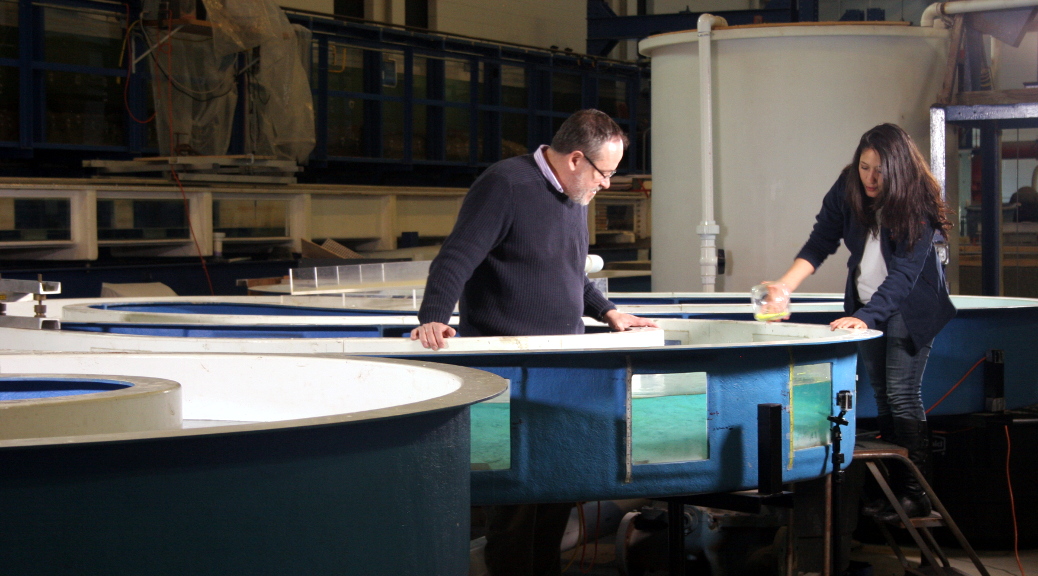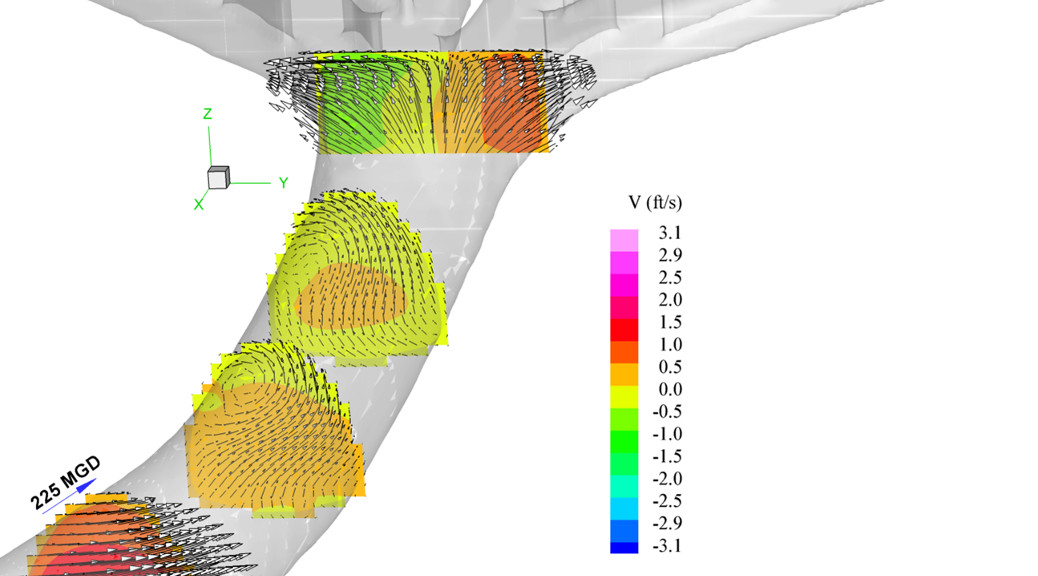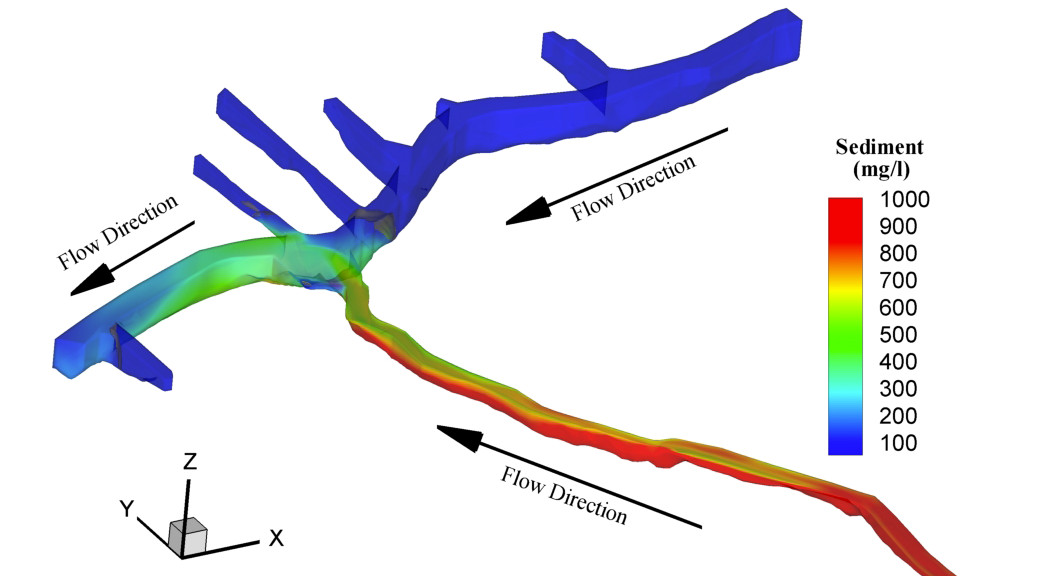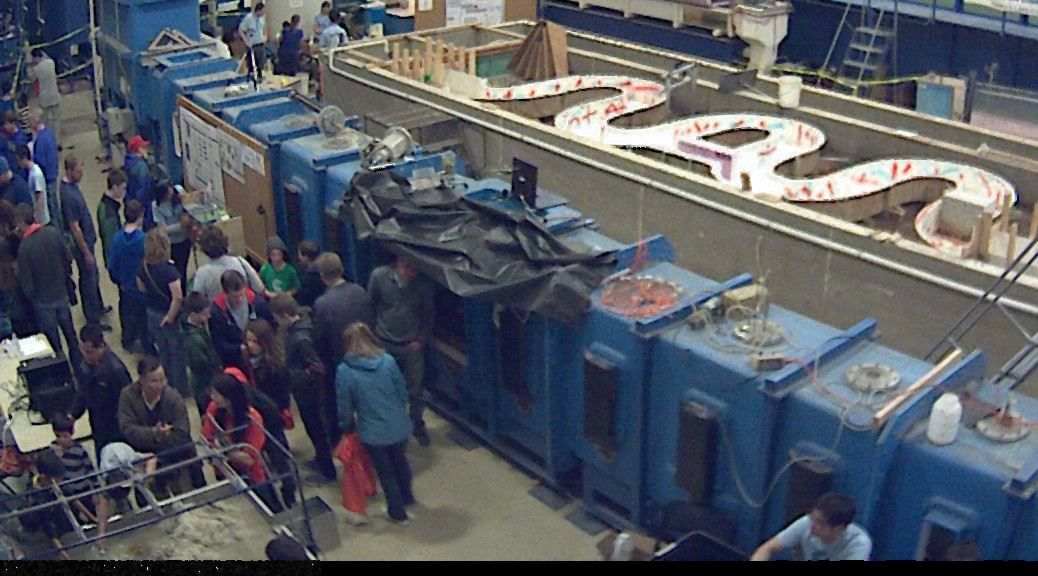Ven Te Chow Hydrosystems Laboratory is a 11,000 square-foot hydraulic research laboratory at the University of Illinois at Urbana-Champaign, part of the top-ranked Department of Civil and Environmental Engineering. Th
All posts by noberg@illinois.edu
Asian carp egg transport
Our top-notch researchers and facilities can be easily leveraged for variety of modeling and research efforts, not just in the hydrodynamics of waterways but also in understanding threats to the riparian and aquatic environment that can endanger water resources for millions of people and animal species. Asian carp are an invasive species that has spread throughout the United States and now threatens the Great Lakes. Our team, in collaboration with the U.S. Geological Survey, is performing research on the transport of Asian carp eggs. This modeling effort helps policy and decision makers understand the propagation of the species by understanding how the eggs drift in rivers and lakes. The FluEgg computational model was developed by our team and we are actively collaborating with the U.S. Geological Survey on further research and development.
Waste water treatment plant structure modeling
Waste water treatment plants take in a large amount of debris which must be removed prior to treatment. Grit chambers are sedimentation basins that filter out smaller debris such as coffee grounds, sand, and other materials that would damage equipment in the plant further along in the treatment process. The performance of these chambers can vary depending on the configuration of the system. Our team has experience in the modeling of grit chambers by computational fluid dynamics. In our project, the grit chambers were not operating as expected due to the internal hydraulics of the structures and intake system. Secondary recircluation zones perpendicular to the flow direction caused grits to be resuspended reducing the lifespan of the pumps. Our research resulted in the adoption of modifications to the system to prevent resuspension.
Dispersal and transport of oil droplets
Our staff have been consulted on projects involving modeling and remediation of environmental disasters. One of our recent projects involved understanding the dispersal and transport mechanism of oil droplets resulting from a major oil spill into a Midwestern waterway. We obtained oil samples from the same oil that contaminated the river and using specialized equipment measured the oil droplet breakdown and resulting size distribution of particles. This was coupled with a computational model that simulated the transport of oil droplets throughout a river system including dispersal and deposit within a lake. Also simulated was the effect of a dam on halting the transport of the oil droplets.
As a part of this project a specialized sediment trap was developed in-house for acquiring contaminated sediment and water. The samples were used to compare against simulation results for calibration.
Modeling of river hydrodynamics
Many of the consulting services the lab is utilized for is modeling hydrodynamics and water quality of waterways. Our staff have extensive experience in modeling studies, including studies done in Chicago, Kansas, New Jersey, California, Argentina, Costa Rica, and other locations domestic and internationally. Sediment transport is one of our specialties. In the picture above, results from a computational fluid dynamics simulation indicated extensive transport of polluted sediment from a tributary into a main channel of a river.
We specialize in the Environmental Fluid Dynamics Code (EFDC) as well as Telemac, Fluent, FLOW-3D, HEC-RAS, and WASP.
Engineering Open House 2016
The Hydrosystems Lab is a popular location for visitors during the annual Engineering Open House. This years open house, March 11-12, 2016, had over 2,000 visitors who learned about hydraulics, hydrology, ground water, pollution, and water resources at the dozens of hands-on exhibits available. Some of the exhibits available were:
Hydrology + Sandbox = FUN!!
Hydrosystems Lab
Tunnel and Reservoir Plan Model
Hazards of Modern Spillway
Tic-Tac-Tile
Wind Tunnel
Little Big River
Water, a Resource Balancing Act
Gravity Flows
Salt vs. Cold – Double Diffusion in our Oceans




